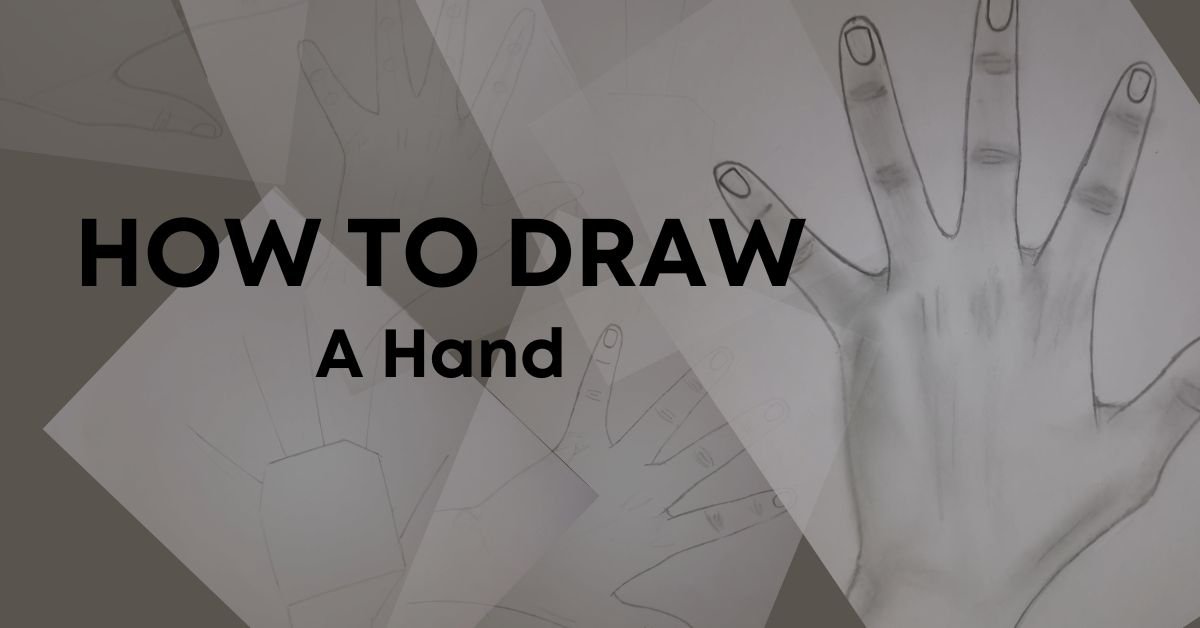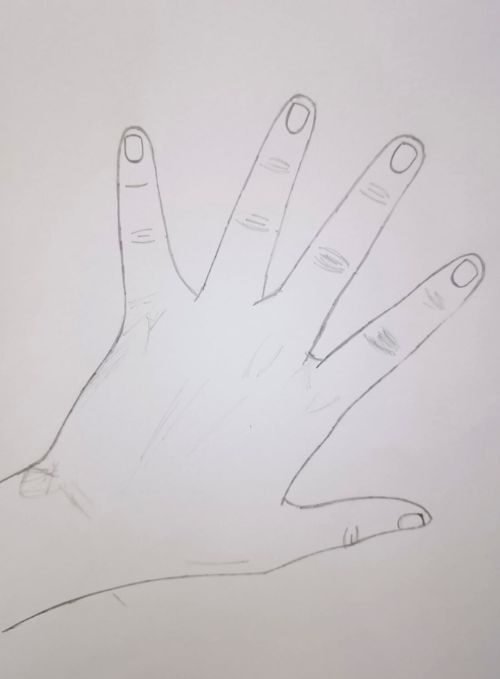
Welcome, aspiring artists and creative souls! Are you ready to to learn how to easy drawing of hand? Look no further because today, we will break down the process step by step, making it easy for beginners like you.
Materials Required for Drawing of Hand
Before we begin, make sure you have the following materials ready:
- Pencil
- Paper
- Eraser
- Pencil Sharpener
- Optional: You may also want a smudging tool, such as a blending stump or a cotton swab, to create smooth shading effects.
Step-by-Step Guide for Hand Drawing
Now that you have all the necessary materials let’s proceed with the step-by-step guide on drawing a hand.
Step 1:
Draw basic shapes for the palm and fingers

When it comes to drawing a hand, the first step is all about laying down the foundation. By starting with basic shapes for the palm and fingers, you can ensure that your hand drawing turns out proportionate and accurate.
Step 2:
Add guidelines for the fingers

Now that we have our basic shapes for the palm and fingers, it’s time to move on to the next step – adding finger guidelines. These guidelines will help us determine the length and position of each finger.
Start by drawing a line from each joint point on the palm toward where you want the tip of each finger to be. These lines will serve as your guides. Remember, they don’t need to be perfect or exact; rough estimates will do.
Step 3:
Sketch the shape of each finger

Now that you have the basic palm shape and guidelines for the fingers, it’s time to start adding more details. Begin by sketching the shape of each individual finger. Remember, we’re going for a simple and easy drawing here, so don’t worry too much about making them perfect!
Start with the index finger on your hand reference or imagination and lightly draw its outline using short, curved lines. Move on to sketching the middle finger right next to it, followed by the ring finger and pinky. Each finger should be slightly different in length and thickness, so keep that in mind as you go along.
Step 4:
Draw the thumb

Start by drawing a curve connecting to your palm’s inner edge palm. This will be the base of your thumb. Then, draw a slightly longer curved line above it to create the top part of your thumb. Now, connect these two lines with a smooth curve to form an outline for your thumb.
Next, add another guideline within this outline to help you position your thumb joint thumb.
Step 5:
Add details to the palm

Once you have sketched the basic shape of the hand, it’s time to add some details to make it look more realistic. Start by adding lines and curves to define the knuckles and creases on the palm. These lines will give your hand drawing a sense of depth and dimension.
Step 6:
Refine the fingers and add nails

Now that you have sketched out the basic shape of each finger, it’s time to refine its appearance. Take a closer look at your reference or model and beach fingers the subtle curves and finger. Pay attention to how they bend and overlap with one another.
Using light pencil strokes, carefully outline the contours of each finger, making sure to capture their unique shapes. Nails can vary in length, shape, and thickness from person to person, so observe carefully when sketching them.
Remember, no two fingers are exactly alike! Take your time with this step, as it can greatly affect the overall realism of your drawing.
Step 7:
Erase unnecessary guidelines

Now that you have sketched the basic shape of the hand and added details to the palm, it’s time to clean up your drawing by erasing any unnecessary guidelines. This step is crucial in achieving a polished and professional-looking hand drawing.
Step 8:
Finish Up with Some shading and highlights – Optional

Now that you have successfully drawn the basic structure of a hand, it’s time to bring your drawing to life by adding some shading and highlights. This step is optional but can greatly enhance the realism and depth of your artwork.
To start, identify the light source in your drawing. This will determine where the shadows fall on the hand. Use light pencil strokes to shade in areas away from the light source, such as under the fingers or along the palm creases. Gradually build up layers of shading to create a smooth transition between light and dark areas.
Next, add some highlights using an eraser or white pencil. Focus on areas where light would naturally hit, such as the knuckles or edges of fingers. By carefully lifting off or adding lighter tones, you can create a sense of dimensionality and make your drawing pop.
Remember to observe real-life references to guide how shadows behave on different surfaces and angles. Be bold and experiment with different techniques once you achieve the desired effect.
With patience and practice, anyone can learn how to draw a hand easily, step by step. So grab your pencil, follow these steps, and let your creativity flow!
Happy drawing!
Also Check:



